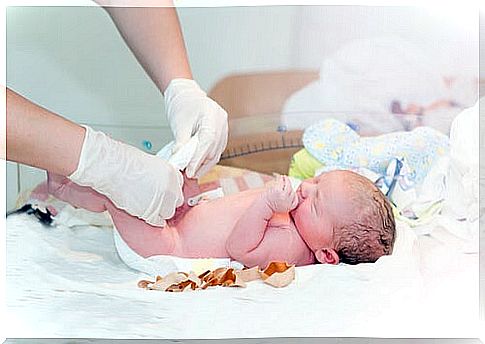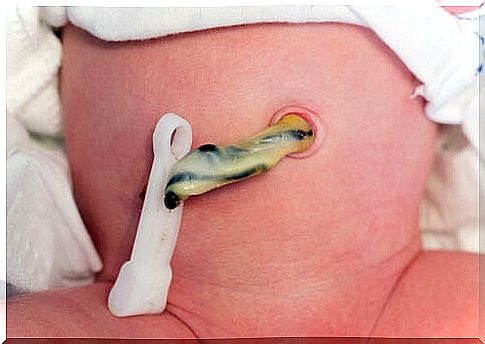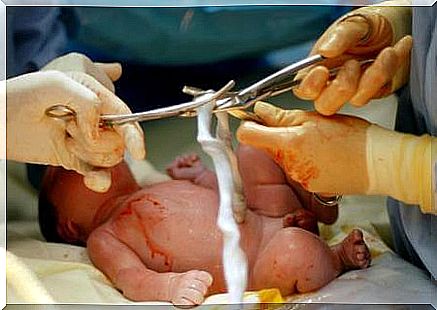When Should The Umbilical Cord Be Cut After Birth?

In childbirth, the most common is to cut the umbilical cord after the baby is born. Until a few years ago, this procedure was performed immediately afterwards. However, over time this changed for various reasons.
Nowadays, many medical studies have determined that it is better to wait a few minutes or even for it to stop beating to cut it off. Why?
What is the umbilical cord
During pregnancy, the baby is attached to the placenta through the umbilical cord. This cord is made up of two arteries and a vein, protected by a whitish tissue.
Blood vessels have a very particular spiral shape; Its function is to provide the baby with the nutrients and oxygen necessary for its subsistence within the mother’s womb.
The length of the cord must be adequate. At nine months of pregnancy, it has to be between 50 and 60 centimeters long and two centimeters wide. A longer cord can block the birth canal and prevent the baby from coming out.

On the other hand, a shorter cord prevents the baby from descending, which would cause fetal distress. In both cases, a cesarean section should be used.
Umbilical cord blood contains stem cells, whose function is to regenerate blood cells. For that reason, in some hospitals it is removed and frozen to treat blood diseases.
Once the child is born, the cord continues to beat for a few minutes. Commonly, the cut was made so that the baby begins to breathe on its own.
However, it has recently been found that it is better to let it stop beating or wait a few minutes to cut it off. Let’s see why.
Why wait to cut the umbilical cord after birth?
The reason obstetricians cut the cord immediately after birth was to prevent the baby from suffering from jaundice and the mother from postpartum hemorrhage.
The extra blood that the mother passes through the cord during those few minutes causes an increase in red blood cells in the child. The pigment of these is deposited on the skin and gives that characteristic yellow color.
For these reasons, waiting to cut the cord after birth is beneficial for the baby. Precisely this extra blood supply also generates an increase in iron and hemoglobin, which are stored in the body.
In this way anemia is avoided, at least during the first year of life. It has even been observed that the postpartum hemorrhage rate does not increase significantly.
Although there is yellowish pigmentation in babies whose umbilical cord is cut a few minutes after delivery, the risk of jaundice is not increased . Nor does this cut affect the result of the Apgar test, which is performed on the baby five minutes after birth.
However, when the mother has been sedated during delivery, the umbilical cord must be cut immediately at birth; it is about the medicine not passing into the baby’s body.

How long to wait to cut the cord?
It is recommended to wait two to three minutes to cut the umbilical cord after the baby is born. In this way, an extra 100 milliliters of blood are provided, which translates into a high iron and hemoglobin level; these levels remain so up to six months of life or more.
After these minutes, the cord gradually stops beating, but blood continues to pass to the baby, which poses a greater risk of jaundice. Therefore, you should not wait until it stops beating completely, which happens five minutes after birth.
To proceed with the cut, the obstetrician places a clamp two centimeters from the baby’s navel and another one 4 centimeters away. The cut is made in the space between the two. The remaining piece is clamped and kept bandaged until it dries and falls off on its own, usually seven days after birth. In some hospitals they allow the father to be the one to make the cut.
The cut of the umbilical cord of the baby should be discussed with the obstetrician, to know how to proceed. In the event that it is preferred to wait to cut it, it must be previously recorded in the mother’s medical record.










